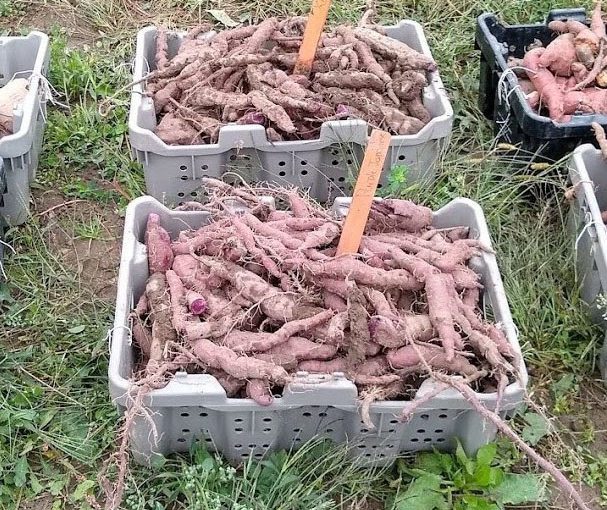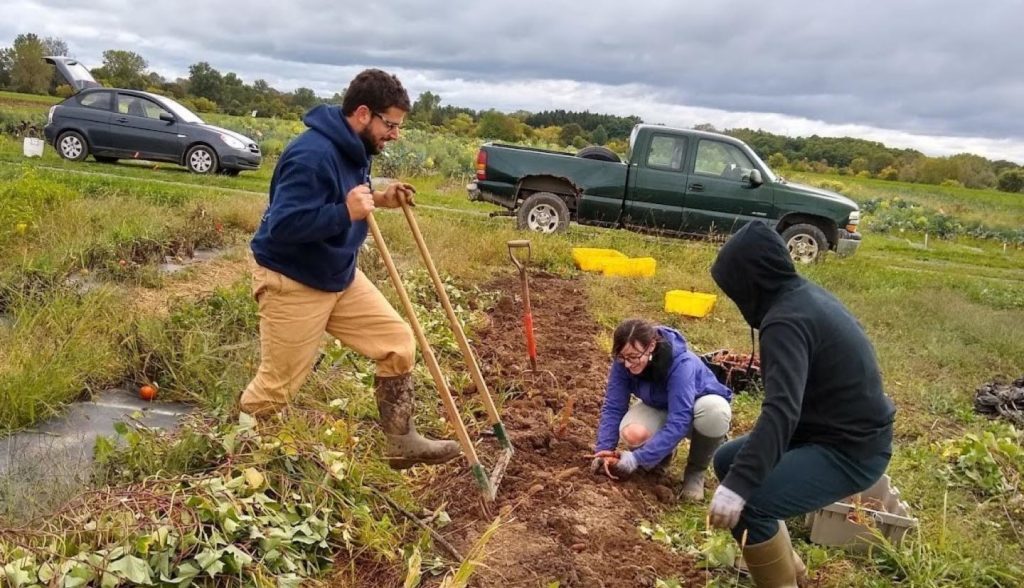Mar 24, 2021Cornell faculty team up for sweet potato improvement
Gaurav Moghe, assistant professor of plant biology, is an expert in plant biochemistry (phytochemistry) – researching the evolution and applications of plant metabolism. Horticulture Professor Steve Reiners is an authority on vegetable production in New York state – with a focus on enhancing the profitability and sustainability of New York vegetable farmers.
Together, Moghe and Reiners faculty in the School of Integrative Plant Science are characterizing the yield and high-value nutrient content for different sweet potatoes. Their goal is to identify suitable varieties for economically viable production in New York state.
Gaurav has a general interest in diverse phytochemicals produced by the plant family Convolvulaceae (morning glories), which includes sweet potatoes and many other popular horticultural species. He says that ant

Here, we asked Gaurav and Steve to talk more about their latest collaboration. The project, “Evaluation of High-Value Phytochemical Yields From New York Grown Sweet Potatoes and Their Economic Potential” is funded by USDA Hatch grant #1021130.
How would you describe your collaboration?
Steve: I work with Chuck Bornt, a vegetable specialist with Cornell Cooperative Extension, to recommend sweet potato varieties to Gaurav. I prepare the beds here at Cornell AgriTech in Geneva, where we jointly do planting and harvesting, while Chuck oversees trials at grower farms.
Gaurav: In addition to the popular orange-fleshed sweet potatoes suggested by Chuck, we identified several purple-fleshed varieties to try. After harvesting with Chuck and Steve, we analyze their overall traits like weight and size, evaluate different extraction methods, and determine the levels of the anthocyanins and carotenoids produced.
Based on your preliminary data, what kinds of differences are you seeing among varieties?
Gaurav: The major difference is in root size. Beauregard/Covington varieties are orange and grow very well. The purple varieties we’ve tested are more slender and small, but produce many more roots than Beauregard and Covington, so the overall weight yield of the roots is comparable. Our chemical analyses are revealing substantial variation among varieties in both the types of anthocyanins produced and their quantities.
What is the influence of different growing conditions?
Gaurav: In 2019, we planted only in Geneva, NY. In 2020, we planted in both Geneva and near Kinderhook in eastern New York, which has some of the most fertile farmlands in New York state. We’ve just finished analyzing length, weight, and circumference, and the Kinderhook sweet potatoes are showing a much higher yield.
What other compounds are you looking for, in addition to anthocyanins and flavonoids?
Gaurav: We are studying a class of compounds called resin glycosides in morning glories that inhibit weed and insect growth. Understanding their diversity and biosynthesis can help identify new strategies for natural pest and weed control.
How might New York growers use this information?
Steve: Information from this sweet potato study can be used to market fresh products and sweet potato-based products. A major goal is to see if sweet potato farmers here can become suppliers of anthocyanins and purple powders to the health industry and cosmetics and chemical companies.
What are you finding most fun or interesting about the project?
Steve: Chuck and I feel that sweet potatoes are very underutilized in New York, with a perception of it being a southern crop. Having someone like Gaurav take an interest and look at it from perspective of potential new products is exciting. Gaurav spoke to sweet potato growers at the 2020 Empire State Fruit and Vegetable Expo, and such activities help connect lab research to actual field applications. It’s fun to talk about the crop not only in terms of field production issues but also as a source of new plant products.
Gaurav: Purple sweet potatoes are absolutely beautiful to look at. They may not taste as sweet as orange-fleshed ones, but they are very nutritious. More purple sweet potatoes should be grown in New York. The harvests are usually completed in early-mid October, so I plan on using them (again) for the Thanksgiving dinner this year!
– Magdalen Lindeberg, Cornell University















